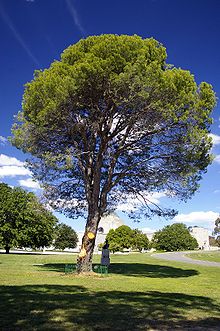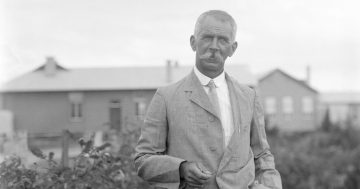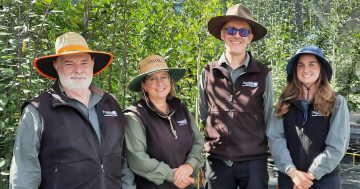
The focus of a media release by the ACT Territory and Municipal Services Directorate is, fittingly, the upcoming ANZAC Day. According to the release, Yarralumla Nursery have plants for sale with ties to Gallipoli- the Lone Pine, Gallipoli Rosemary and Gallipoli Rose.
The Lone Pine, which the Yarralumla Nursery has grown since 1950, has a particularly interesting link to the Gallipoli campaign.
The Lone Pine received its name in 1915 after the Turkish soldiers, in order to cover and line their trenches, cut down all but one of the Aleppo Pines (Pinus halepensis) that covered Plateau 400, which they were defending.
The area, aptly named Lone Pine Ridge, was the scene of some of the fiercest fighting in the Gallipoli campaign and the last tree was destroyed during battle. Following its capture after intense fighting and the loss of over 2000 Australian soldiers, Lance Corporal Benjamin Smith collected a pine cone.
Smith, whose brother was killed in the offensive, sent the cone to his mother in Inverell in NSW. She kept the cone for 13 years before planting its seeds. Two seedlings were grown. One was presented to the town of Inverell, while the Duke of Gloucester planted the second tree at the Australian War Memorial in 1934.
The Yarralumla Nursery sells Lone Pines all over Australia, and have sold over 100 this year alone. They are also selling the Gallipoli rose, which was brought back by as Australians as a symbol of peace; and the Gallipoli Rosemary, which was brought back from Gallipoli in the form of cuttings from a wild Rosemary.
Sales from the Gallipoli Rosemary help support the Avenues of Honour 1915-2015 project, an initiative of Treenet, which aims to commemorate every individual who has fallen in the service of Australia with a tree.
If you are interested in owning your own piece of history, the Yarralumla Nursery is open seven days a week, and 1-4:30pm on ANZAC Day. Or, if you are interested in ordering Lone Pines, you can call the nursery on 6207 2444 or visit www.tams.act.gov.au/live/yarralumla_nursey
[photo by Bidgee, CC BY 3.0]














